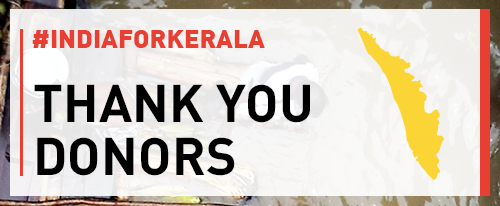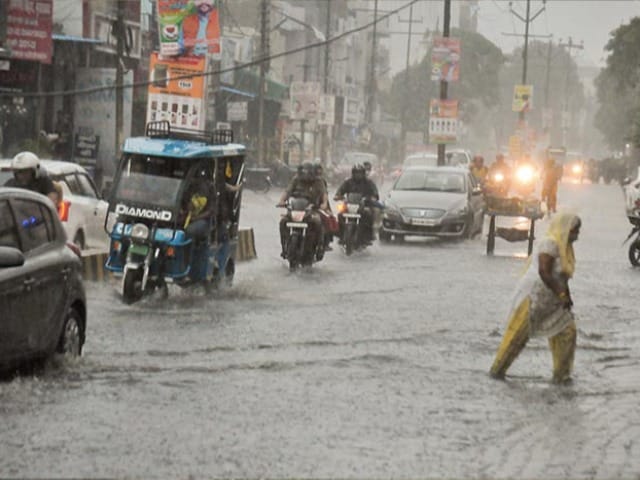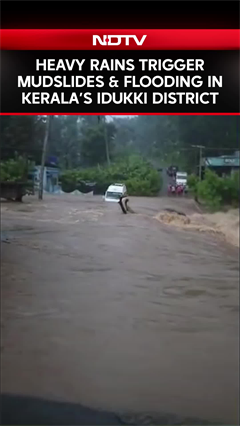- Home/
- Halfway Through Monsoon, One-Fourth Of India Faces Rain Deficit: Weather Office
Halfway Through Monsoon, One-Fourth Of India Faces Rain Deficit: Weather Office

While floods in Assam and heavy rainfall-induced landslides in Kerala have drawn global attention, 25 per cent of the 36 meteorological subdivisions in India are still reeling from a rainfall deficit halfway through the monsoon season.
According to India Meteorological Department (IMD) data, the country experienced nine per cent more rainfall than normal in July (306.6 mm compared to the normal of 280.5 mm) with a cumulative precipitation of 453.8 mm against the normal of 445.8 mm since June 1, a surplus of two per cent.
However, the rainfall in July was unevenly distributed, both spatially and temporally.
East Uttar Pradesh, Bihar, Jharkhand, Gangetic West Bengal, and parts of the northeast have recorded significant rainfall deficits.
The rainfall deficit in Haryana, Punjab, Himachal Pradesh and Jammu and Kashmir ranged from 35 per cent to 45 per cent.
The rainfall deficit in East and Northeast India increased from 13.3 per cent on June 30 to 19 per cent on July 31, with the region recording 610.2 mm of rainfall against the normal of 752.5 mm so far this monsoon season.
Northwest India recorded 182.4 mm of rainfall in July, compared to the normal of 209.7 mm, a deficit of 13 per cent. The region has received 235 mm of rainfall so far this monsoon season, against the normal of 287.8 mm, a shortfall of 18 per cent.
Central India received 33 per cent more rainfall than normal in July, with 427.2 mm of precipitation compared to the normal of 321.3 mm. Overall, the region has recorded 574.2 mm of rainfall so far this monsoon season, against the normal of 491.6 mm.
The southern peninsula received 36 per cent more rainfall in July, with 279.2 mm compared to the normal of 204.5 mm. Overall, it has recorded 463.1 mm of rainfall so far this monsoon season, against the normal of 365.5 mm, an excess of 27 per cent.
According to IMD data, the rainfall deficit in Gangetic West Bengal stands at 40 per cent, with all 15 districts recording below-normal precipitation. Jharkhand has received 41 per cent less rainfall than normal, with all 24 districts in the deficient category.
Odisha has a rainfall deficit of 11 per cent, with 12 of its 30 districts in the deficient category. All but five districts in Bihar have recorded a significant rainfall deficiency, resulting in an overall 36 per cent deficit for the state so far this monsoon season.
The rainfall shortage in Uttar Pradesh and Uttarakhand stands at 15 per cent and four percent, respectively.
Nineteen out of the 22 districts in Haryana have recorded below-normal rainfall, with the overall deficit standing at 43 per cent. The rainfall deficit in Punjab is 45 per cent, with only three of the 22 districts recording normal rainfall.
Jammu and Kashmir, which has been reeling from a rare and severe heat wave, has recorded 37 per cent below-normal rainfall.
The IMD had earlier predicted normal to above-normal rainfall over most parts of the country, except many parts of northeast India and some parts of northwest, east, and southeast peninsular India.
The weather department expected above-normal rainfall activity in Himachal Pradesh, Uttarakhand, Jammu and Kashmir, and the foothills of the western Himalayas.
Kerala, where heavy rainfall-induced landslides have claimed over 150 lives, has received four per cent less rainfall than usual.
Delhi, where 15 people have died in rain-related incidents, has received eight per cent below-normal rainfall.
In central and west India, Goa has received 50 per cent surplus precipitation, Maharashtra 39 per cent, Gujarat 23 per cent, and Madhya Pradesh seven per cent.
In southern India, Tamil Nadu received 56 per cent surplus rainfall, Andhra Pradesh 43 per cent, Karnataka 33 per cent, and Puducherry 20 per cent.
The Indian monsoon is characterised by inherent fluctuations and changes that occur over time due to various natural factors. This is called natural variability. However, research shows climate change is making the monsoon more variable. Increased variability means more extreme weather and dry spells.
According to the IMD, below-normal rainfall is expected in northeast India during the entire season, normal in the northwest, and above-normal in central and south peninsular regions of the country.
India's core monsoon zone, covering most of the rain-fed agricultural areas in the country, is predicted to receive above-normal rainfall this season, the Met office said.
The monsoon is critical for India's agricultural landscape, with 52 per cent of the net cultivated area relying on it. The primary rain-bearing system is also crucial for replenishing reservoirs critical for drinking water and power generation across the country.
June and July are considered the most important monsoon months for agriculture, as most of the sowing for the Kharif crop takes place during this period.
Weather agencies expect La Nina conditions to set in by August.
La Nina, a buildup of cooler-than-normal waters in the central Pacific Ocean, is associated with plentiful rainfall in the Indian subcontinent during the monsoon season.
(Except for the headline, this story has not been edited by NDTV staff and is published from a syndicated feed.)
#IndiaForKerala Telethon
Why Kerala Needs Your Support
Kerala has been hit by the worst floods in a 100 years. The Kerala Government estimates Rs 21,000 crore will be needed to rebuild the state. The funds are required to rebuild hundreds of flooded villages, thousands of damaged and destroyed homes and 10,000 kilometres of ravaged roads.
This Onam as Kerala struggles to rebuild after the most devastating floods in a century, NDTV has organised a special telethon to raise funds for Kerala. We have specific goals - to enable the rebuilding of villages in the worst-affected districts and provide immediate assistance in terms of rehabilitation and food kits to people in the worst affected areas . All donations will go directly to our partner NGO Plan India.
Our focus will be coverage that makes a difference, stories with a heart, standing by people and making their experience a shared one to effect change.
NDTV chose to report on this massive crisis with unwavering focus and commitment; having done that, now we look, as NDTV always does, to go beyond the news and make a difference to people's lives.
Photos
Show MoreVideos
Show MoreUpload Photos/Videos
The Kerala floods has caused massive devastation to life and property. About 357 people have died and lakhs have been relocated to relief camps. Send photos and videos of the rescue efforts, using the form below.
Opinion
Opinion: A Malayalam Sleeper Hit Spotlights Unsung Heroes Of 2018 FloodsAnand Mathew
Thursday May 25, 2023Through the microcosm of a small town in Kerala, '2018' tells the story of ordinary citizens coming together to save those in need, as they confront an unimaginable catastrophe.
Blogs: बाढ़ की वजह इंसानों की बनाई नीतियां?Ravish Kumar
Saturday August 10, 2019ज़मीन पर बाढ़ के कारण इंसानों की बनाई नीतियां हैं जिसे मैन मेड क्राइसिस कहते हैं. प्राकृतिक संसाधनों का बेख़ौफ़ इस्तमाल जलवायु परिवर्तन के कारणों को बढ़ाता है. इस बाढ़ को दो तरह से समझिए. दो महीने की बारिश अगर दो हफ्ते में हो जाए तो क्या होगा. क्यों ऐसा हो रहा है. आप मानें या न मानें जो लोग ऊंचे बांधों, कार्बन उत्सर्जन, और नदियों के किनारे निर्माण कार्यों को लेकर चेतावनी देते रहे हैं, जिन्हें हम एक्सपर्ट कहते हैं, बुलाते हैं और सुनकर भुला देते हैं, उनका मज़ाक उड़ाते हैं, लेकिन उनकी एक एक बात सही साबित होती जा रही है.




















